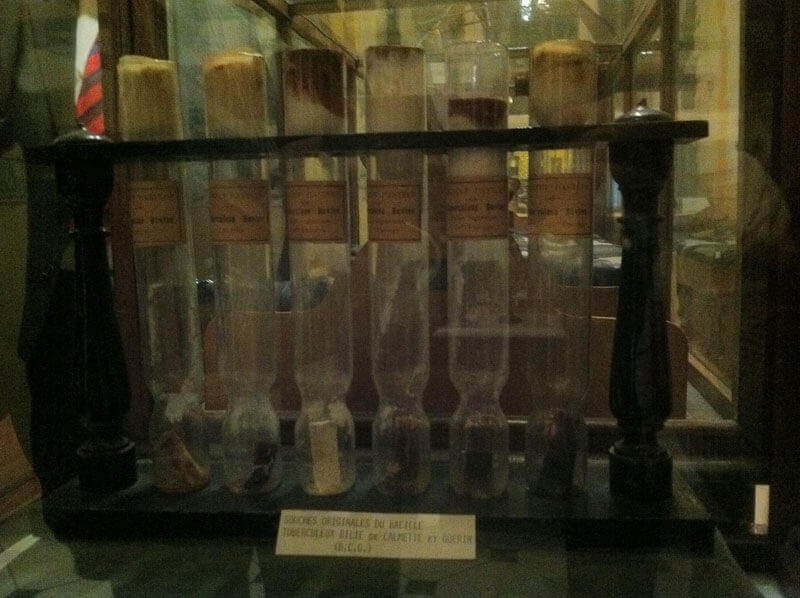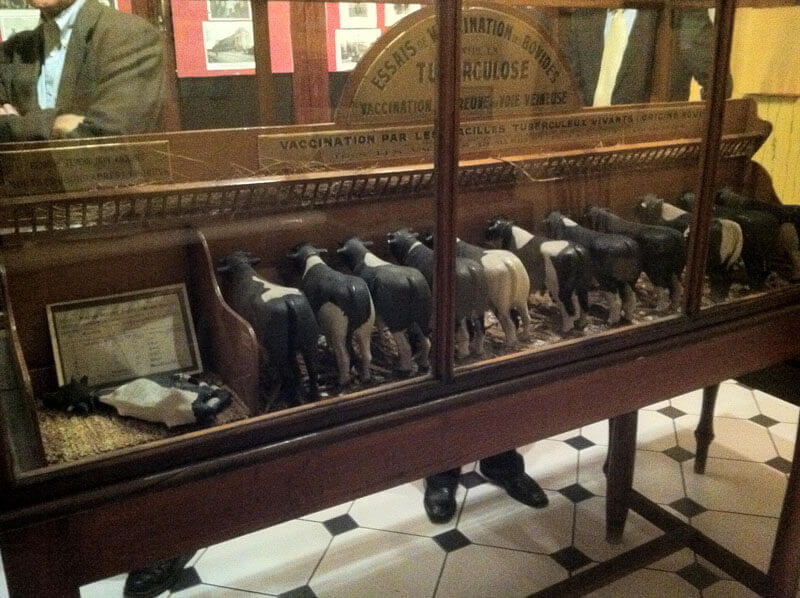Jamie RosenAeras
Jamie Rosen is Manager of Media and Communications at Aeras, a non-profit biotech advancing the development of tuberculosis vaccines for the world.
Jamie Rosen is the media & communications manager for Aeras, a GHTC member. Aeras and the TuBerculosis Vaccine Initiative (TBVI) recently hosted a booth at the Union World Conference on Lung Health to hear from conference attendees about the need for a new TB vaccine. This blog post reflects what Aeras heard and experienced at the conference.
“TB vaccines, urgently needed. For how long should we be patient!” Nigerian Egbagbe Eruke’s eloquent words were echoed through the halls of the Lille Grand Palais.
Physicians, academicians, and members of civil society and the private sector from over 100 countries gathered in Lille, France from Oct. 26-30 to discuss challenges in controlling tuberculosis (TB) and other lung health issues at the 42nd World Conference on Lung Health, hosted by the International Union Against Tuberculosis and Lung Disease.
Conference participants were not shy in their calls for new vaccines to fight the world’s second deadliest infectious disease.
“In TB, we are stuck with a 90-year-old vaccine that has limited efficiency! We need to move on!” appealed Lucica Ditiu, executive secretary of the Stop TB Partnership.
“It’s time to think that we are all in the same boat of humanity,” added patient advocate Alberto Colorado, who lives along the US/Mexico border.
Dr. Milton Chemhuren of Zimbabwe had this to say: “Prevention is the best, so I support the introduction of new vaccines. We can save a lot of lives and resources. Today our health services systems are overwhelmed by TB patients, especially with the HIV which has fueled TB in our countries.”
This resounding support was captured on a world map at the exhibit booth shared by Aeras and the TuBerculosis Vaccine Initiative (TBVI). By the end of the conference, the map was covered with demands for new vaccines against TB. A slideshow was made to showcase the other messages.
Modeling studies have shown that without new tools to fight TB, including vaccines, we will not come close to meeting the international goal to eliminate TB by 2050. Fortunately, after decades of research neglect, the past 10 years have welcomed dramatic progress in TB vaccine development, with 12 vaccine candidates currently in clinical trials. While scientific challenges remain—for example, there is no shortcut that accurately predicts immunity by looking at animal models or immune responses when the vaccine is given to people—progress has been substantial.
These challenges help to explain the long timelines of TB vaccine development. Researchers estimate that we could have a new TB vaccine by 2020, assuming there is sufficient financial support and at least one of the current candidates meets efficacy requirements.
Developing new vaccines against TB requires giving candidate vaccines to thousands of people in areas where TB is highly endemic—and then waiting to see how many get sick with TB in the vaccine group versus the control group. Before beginning these large-scale efficacy trials, each vaccine candidate must also be evaluated for safety in smaller trials in multiple populations.
Right now, the most advanced TB vaccines under development are in Phase IIb clinical trials, sponsored by Aeras.
In addition to co-hosting an exhibit booth, Aeras co-organized two sessions at this year’s Union Conference, “Partnerships to Accelerate TB Vaccine Development” and “Synergies in the Development of New Diagnostics, Drugs and Vaccines for Tuberculosis.” Two of the presentations from the first session are currently available as webcasts online, one by Aeras’ Chief Scientific Officer Tom Evans on “New Tuberculosis Vaccines in Clinical Development” and one by Videlis Nduba, Primary Investigator at the Kenya Medical Research Institute/US Centers for Disease Control and Prevention (KEMRI/CDC), on “Ensuring Site Capacity for Large-Scale and Multicentre Vaccine Trials.”
 Perhaps the highlight of the conference for many of us involved in TB vaccine development was a reception at the Institut Pasteur de Lille co-hosted by Aeras, Institut Pasteur de Lille, TBVI and the Stop TB Partnership Working Group on New
Vaccines. After the formal reception, attendees had the surprise opportunity to tour the museum at the Institut Pasteur de Lille, which in addition
to chronicling the life and work of Louis Pasteur also details the work of Albert Calmette and Camille Guérin in co-discovering the BCG vaccine. To
make BCG, Calmette and Guérin passed bovine TB bacteria over potatoes from 1908 to 1921 to weaken its infectious properties and then gave it to a newborn
infant in Paris, in whom it was effective in protecting against TB disease.
Perhaps the highlight of the conference for many of us involved in TB vaccine development was a reception at the Institut Pasteur de Lille co-hosted by Aeras, Institut Pasteur de Lille, TBVI and the Stop TB Partnership Working Group on New
Vaccines. After the formal reception, attendees had the surprise opportunity to tour the museum at the Institut Pasteur de Lille, which in addition
to chronicling the life and work of Louis Pasteur also details the work of Albert Calmette and Camille Guérin in co-discovering the BCG vaccine. To
make BCG, Calmette and Guérin passed bovine TB bacteria over potatoes from 1908 to 1921 to weaken its infectious properties and then gave it to a newborn
infant in Paris, in whom it was effective in protecting against TB disease.
Of particular interest were some of the original potatoes that these bacteria were passed over, as well as a model of an experiment using BCG to protect
cows against bovine TB. BCG was given to 11 cows, then 12 were exposed to bovine TB. The dead cow on the left is the “control group” for this experiment,
the only cow who did not receive BCG. 
Sylvain Guérin, the great grandson of Camille Guérin, expressed his support for modern TB vaccine research. “Camille Guérin has devoted his life to this fight and has tried to contribute with the BCG, and I would like to continue in order to perpetuate the family tradition,” he wrote on the exhibit booth map.
While BCG has not been effective in preventing adult pulmonary TB, the most common and infectious form of the disease, it remains the most widely used vaccine in the world and has saved the lives of countless children who may otherwise have developed severe forms of disseminated TB. But with advances in modern science, we know we can do better, and with repeated pleas from conference-goers and others, we know we must. Aeras and its partners will continue to heed these calls until the world has new TB vaccines that are safe and effective for people of all ages, including people living with HIV, and are affordable and available to all who need them throughout the world.